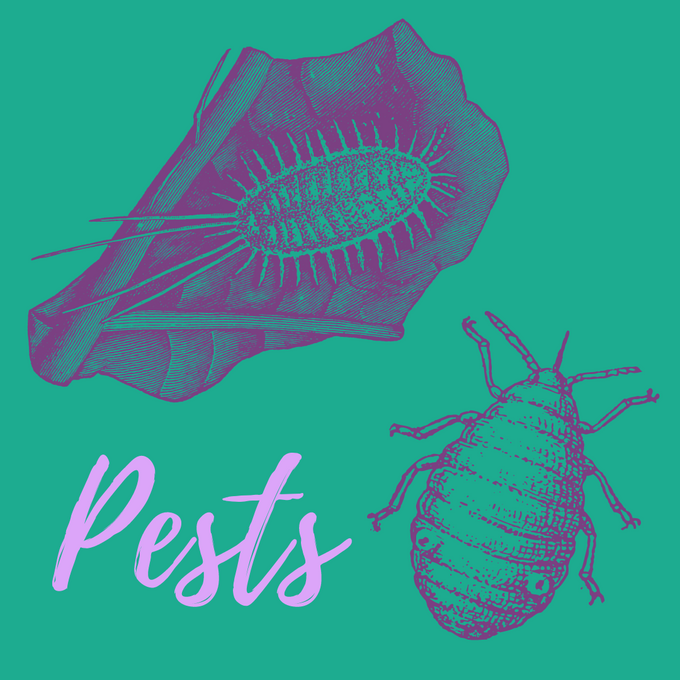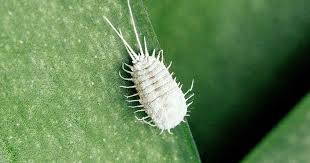
Orchid Pests
Posted by Kamaile & Corinne on Sep 20th 2022
Nobody enjoys a nuisance, especially when that something is attacking our orchids! Pests can be found everywhere in nature and although there is no way to completely prevent any of them from finding your orchid plant, there are a few ways we can keep pests under control. We'll discuss the 5 most common orchid pests and address ways to treat each.

APHIDS, commonly the greenfly aphid, love the soft part of orchids especially new growth and buds. This pest can be easily identified but if left alone can multiply very quickly and become a persistent problem especially during the summer season. So once you spot this pest immediately spray them or immerse the affected part of the plant in insecticidal soap. Check for them frequently because just one aphid can easily turn into hundreds in just a week.
The next pests, possibly one of the most common, are MEALY BUGS. These are about 1/8" long and are covered in a fuzzy, cotton-like substance making them undeniably noticeable. You'll usually find mealy bugs hiding in the crevices near the base of the plant where the leaves form, on the bottom side of leaves, and sometimes under the top

layer of media near the roots. The damage they can do appear as yellow patches but even easier to spot are the fuzzy nests they build with their white cotton coating. Treat these pests with 70% isopropyl alcohol or insecticidal soap. Be sure to penetrate their white protective coating when spraying these pests and use a toothpick or narrow stick to dig them out of those hard to reach crevices to thoroughly remove them from the plant.

SCALES are another common orchid pest. Adult scales will form a protective shell around themselves under which they will lay their eggs. Once the eggs hatch they are in a more vulnerable larval stage but act quickly, these tiny crawlers are quick movers! Scales particularly love Cattleyas almost as much as we do and these pests usually hide on the underside of leaves. The damage done by scales will be seen as yellow patches on leaves and can help to point us to the scales lurking below. These pests also love to hide in the sheath that protect pseudobulbs. If you spot scales on the pseudobulb be sure to remove the sheaths to see if they are hiding underneath as well. Treat scales the same as you would mealy bugs but be sure to dislodge the shell completely. Weekly treatments for the following few weeks may be necessary to ensure the next generations aren't repopulating your plant.
Another common pest for us are THRIPS. Most commonly the western flower thrip. Thrips are the hardest to combat

because they’re difficult to see with the naked eye and they also fly. The adults are brown or black in color while the babies or nymphs are a translucent yellow. You will notice their presence by the deformation and scarring of flower or leaf tissue. They use their mouthparts to penetrate the tissue and suck the sap. Once they attack the bud or bloom, the damage is permanent for the lifetime of that flower.
Prevention of thrips is key since completely getting rid of them is nearly impossible. Maintenance and cleanliness of the growing area is key. Also, we monitor their presence using yellow sticky traps that are checked weekly. This way we can apply a pesticide to the crop to minimize infestation. If you do see the damage of thrips on our orchid, you can treat with insecticidal soap, malathion as well as other insecticides readily available that are specific for thrips.

Lastly are the SLUGS & SNAILS which are always around especially during the wet season. We are constantly working at keeping these pests at bay in our greenhouses. Slugs do the most damage by eating the soft plant material found in new shoot tips & buds, root tips. Since they come out at night, we often don’t see the damage until the next morning. You’ll definitely know that they’ve been attacking your plant because they leave a sticky glue-like substance in their tracks. There are many readily available options for slug & snail control, pellets as well as liquid applications. One natural method is to keep around toads which are natural predators.
We hope this article helped you to identify the most common pests found on orchid plants and ways to treat or prevent them from damaging your plants & flowers.
